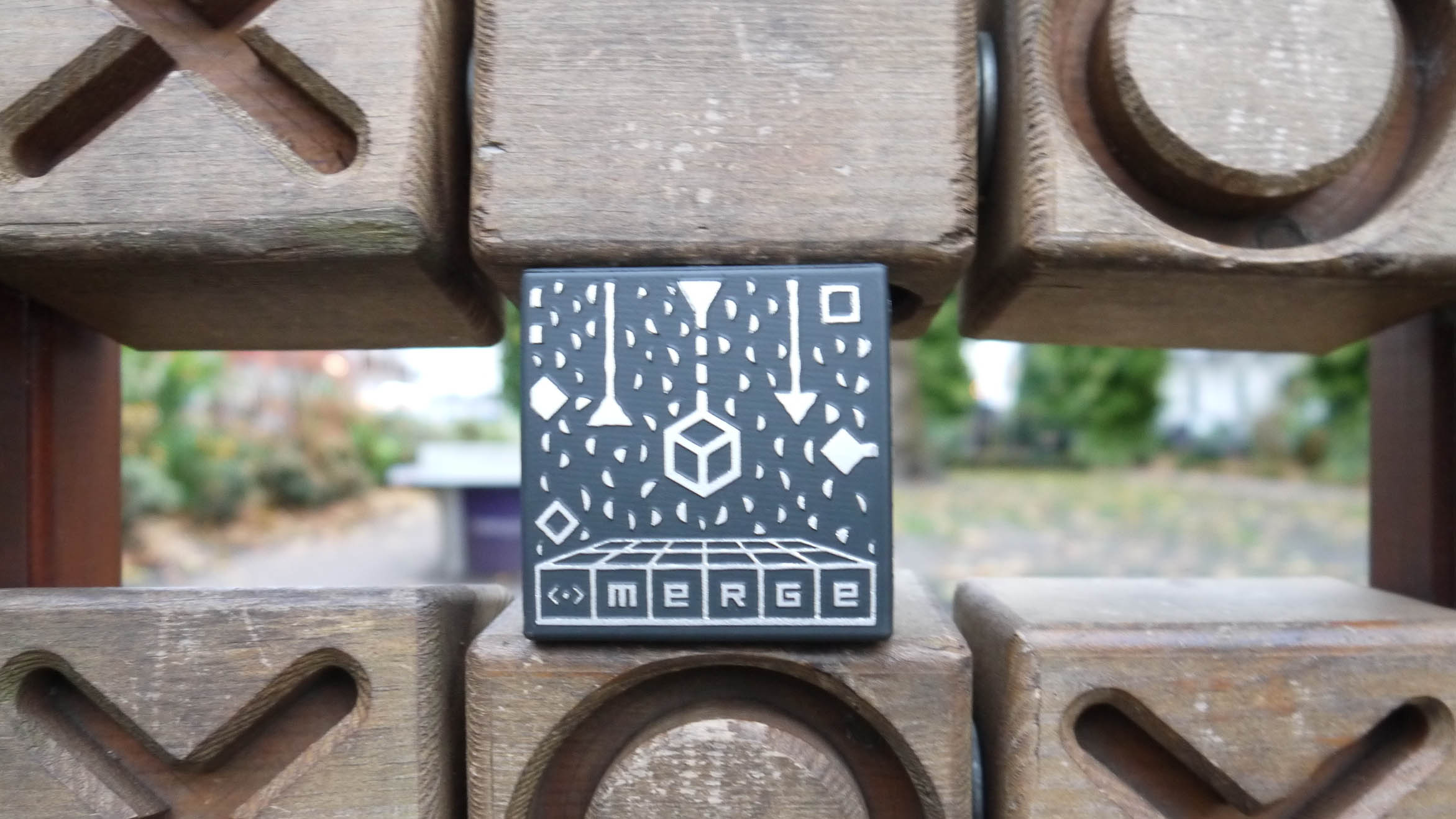TechRadar Verdict
A fun, cheap and oh-so cheerful six-sided stepping stone into the world of AR. It feels like there isn’t a killer app or game yet, but when it comes to value for money, the Merge Cube will be hard to beat.
Pros
- +
Great value for money
- +
Easy to use
- +
A lot of fun
Cons
- -
There are glitches
- -
Games last for minutes
- -
Not enough content
Why you can trust TechRadar
VR and AR are in something of a purple patch at the moment. Both Oculus and HTC have drastically reduced prices on their VR kit, making it attainable for the first time since pretty much ever.
Sony is pushing hard with its current slate of PSVR games, while Apple has wholeheartedly embraced AR, with Tim Cook announcing it will “change everything” at a 2017 earnings report.
Granted, all ships rise in a high tide but what does this really mean for the budget headset maker which uses a phone to power AR and VR?
With the big players setting out their stalls, and Google Cardboard devices handed out for free whenever a new magazine campaign comes along, it means it is harder than ever to differentiate a product.
Cheap prices just don’t do it anymore. What you need is something original, something innovative to turn heads.

That’s what Merge VR has. Its Merge Cube changes the way you look at AR, the way you interact with it and the best thing about is that it fits in the palm of your hand.
Avid readers of TechRadar will be familiar with Merge Cube - the small, spongy device that offers a tactile future for AR won TechRadar’s Most Unique Product award at CES 2017 (when it was dubbed the Holo Cube). And now it’s available in the shops, months after its show debut.
TechRadar has spent some time with the device and it is a fun experience to hold AR in your hand. It’s by no means seamless but it does bring a smile to your face.
Design and features
The Merge Cube doesn’t have to be tied to the Merge VR headset. The makers of both products are obviously hoping that you will use the both together but the cube can be used on its own with a smartphone, or any headset that is AR compatible.
We tried the full Merge kit, so let’s start with the headset first. The issue we normally have with budget headsets - and this is low cost - is that they are ridiculously uncomfortable to wear. Merge VR counteracts this by making its cladding super soft. It will still leave a bit of a mark on your face but we didn’t feel any pinching when wearing it.

Your phone - the apps are iOS and Google compatible - slips into a rubber sheath. But depending on the size of the handset you may have to stretch it a bit to get the phone in. We tried it with a Samsung Galaxy S6 Edge and OnePlus 3T handset and both were a bit of a struggle to get in but there was enough give in the headset to make them work.
The Merge VR headset does both VR and AR. To switch between the two is extremely simple: you just pop out a bit of material from the front of the headset for AR goodness. This keeps the camera lens area of the phone free and means you can view AR content.

As for the Cube, it's a palm-sized device that's soft, durable and light. It's marked on each side with glyphs akin to QR codes that transform into a holographic-like images when viewed through an AR app (whether using a headset or just the phone).
Merge has added all of its AR-compatible content to something called the Miniverse platform. It sends you off to your relevant app store when you click on a link but it’s a nice idea to editorialise and curate apps and games you can use in one place.
You should actually have a look around the Miniverse before downloading anything. Merge has done a really good job of demystifying virtual reality for the masses.

Those who have used a VR headset that isn’t tied to a particular service - unlike Samsung VR and others - will agree that it’s a bit of a minefield when trying to find good VR and AR content on myriad app stores.
Here Merge has put an age rating on everything and even lets you know the strength of the VR, great for those who physically don't always get on with virtual reality. Here’s hoping the store will grow and grow.
The issue is that there isn’t actually that much content for the Cube on there. Merge is hoping to change this soon. It recently announced that 1 million of its Merge Cubes have been sold so far (the US got a head start with the cube as it was launched there back in August 2017).
That’s a lot of households that will be hungry for new stuff to try on the cube.

It’s also announced a $1 million kitty for devs to create new apps for the Merge platform. It understands that the cube without applications is just a spongy toy, when it could be much more than that.
At the time of this review, the games and apps on offer were fun to use but not exactly plentiful.
Performance
Head to the Cube section of the Miniverse and there are around 15 to choose from, a number of them are free while most paid-for apps will cost a few pounds/dollars.
The first application we tried - and we recommend you do too - was something called Things. This app offers up short little VR vignettes that work really well with the Merge Cube.
It’s great fun and offers up a tutorial for those who have never tried the Cube before. The trial is simple - you hold the cube up in line with your eyes in the visor and the AR magic happens.

For those who don’t want to use goggles with the Cube, then you are in luck. The packaging turns into a phone holder, so you can plop your phone into that and then hold the cube in your phone camera’s eyesight.
We’d recommend using VR goggles, though, and we’d actually recommend Merge’s - they’re comfortable to use and won’t break the bank.
When loading up the Cube app on your phone (you can check through the app whether your phone is compatible through the site) you will be asked whether you want to view the Cube through goggles or your phone. It’s great that you can do both, but be aware that a few of the apps won’t work just with the phone.
Back to Things, here you can view such AR goodness as an active volcano - where the noise of it gets louder the closer you bring the Merge Cube to your face - an egg that you tap to crack open it and unleash a little alien, a cube-shaped boombox and there’s even a castle that lets off fireworks when you tap it.
Being that it’s all built around a cube, you can move it all round, 360 degrees and find all sorts of Easter eggs. It’s a lot of fun.

Things get more interesting when the Cube games start to use the world around you that little bit more. For instance, there is a mini game where the Cube turns into a piranha and you have to chomp through sushi that’s around the room.
Then there’s a game with a spaceship going through a canyon (it’s an on-the-nose homage to Star Wars). This was one of the most seamless bits of AR we saw through the Cube - the transition from cube to spaceship is great to watch, with only a faint outline of the cube visible (on purpose) around the ship so you can navigate through the canyon.
You can also view a HAL-like Cube, that says: "I’m sorry Dave, I’m afraid I can’t do that". It's great fun.

The gameplay isn’t always smooth, though. We found our fingers would sometimes get in the way and the AR illusion would disappear, leaving just your hand and a real-life soft cube in your eyeline.
While it’s not long before the app catches up with the cube and you are back in an AR wonderland, the jump from AR to reality is a little jarring, though, even if it does only happen occasionally.
Final Verdict
Despite some niggles, the Merge Cube is a fun AR accessory. There’s a very good reason it’s been flying off the shelves in the US: it’s cheap and really does open up AR, making the experience malleable.
Just like when Oculus brought its controllers to the Rift. Merge’s AR Cube enhances the augmented reality experience, giving both adults and children alike to come back to AR time and time again.
Here’s hoping that Merge’s app push will bring some fantastic new ways to use the Cube because, at the moment, as fun as it is it does leave you craving more.
Marc Chacksfield is the Editor In Chief, Shortlist.com at DC Thomson. He started out life as a movie writer for numerous (now defunct) magazines and soon found himself online - editing a gaggle of gadget sites, including TechRadar, Digital Camera World and Tom's Guide UK. At Shortlist you'll find him mostly writing about movies and tech, so no change there then.

